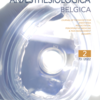Factors influencing anesthesiologistsperceived usefulness of ACRM (Anaesthesia Crisis Resources Management) key points after a combined ACLS (AHA)-ACRM simulation training
Non-technical skills, Anaesthesia Crisis Resource Management (ACRM) key points, Anaesthesiology, Framework, Perceived usefulness
Published online: Sep 27 2022
Abstract
Background: The factors that may contribute to learners’ perception about the usefulness of Anaesthesia Crisis Resource Management (ACRM) key points are little known.
Objectives: We investigated the link between demographic factors and the effect of an ACRM simulation training on anaesthesiologists’ perceived value of ACRM key points.
Design: A prospective pre- and post-test survey from December 2017 to December 2019 of 111 anaesthesiologists involved into a combined ACRM-ACLS course in a simulation centre.
Methods: Before and after the course participants were asked to indicate which were, in their opinion, the 5 ACRM key points most relevant for managing an anaesthetic emergency. No taxonomy tool of the 15 ACRM key points was used for teaching purposes.
Main outcome measures: Pre-/post-course differences in participants’ subjective choices were connected by logistic regression analysis with demographic factors which included age, gender, years of work as anaesthesiologist, the amount of updating exposure, and familiarity with ACRM.
Results: In median participants (47 M/64 F) had an age of 42 years (IQR 34-55 years), and 10 years working experience as anaesthesiologists (IQR 4-20 years). Around 20% of them had never heard of ACRM prior to this course. Communication was selected by up to 75% of participants without pre-/post-course differences. Although the other 4 ACRM points remained heterogeneously selected even after the course, we observed post-course vs pre-course increase in the selection rate of the ACRM points that address leadership, correct distribution of workload and utilization of all available resources. Among participants’ characteristics, the lack of familiarity with ACRM was the only significant predictor of the number of pre- to post-course changes in ACRM key points selection (OR=3.03, CI 95% 1.04 -9.09; p=0.0418).
Conclusions: The familiarity with ACRM should be considered when planning ACRM training, especially in cases where the ACRM training is not yet part of a formal education in anaesthesia.
